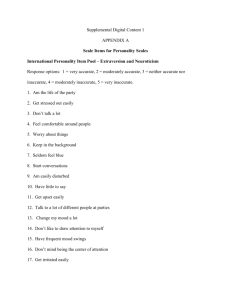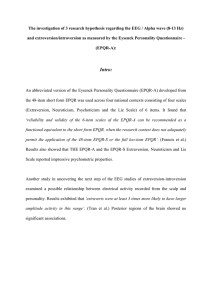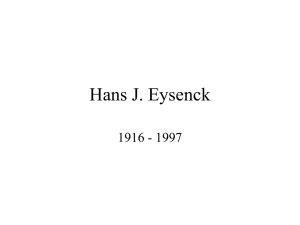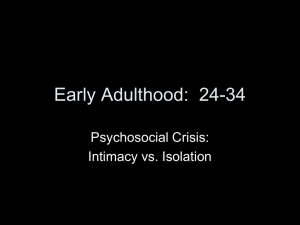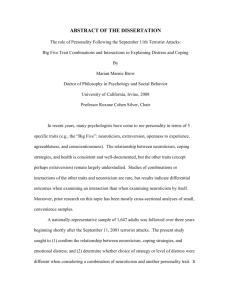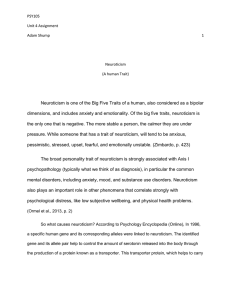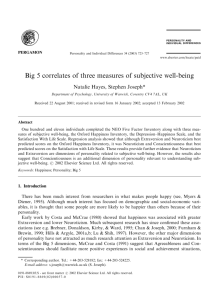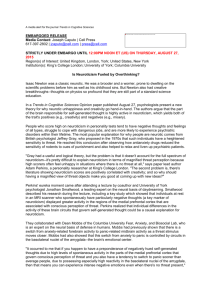practical1
advertisement
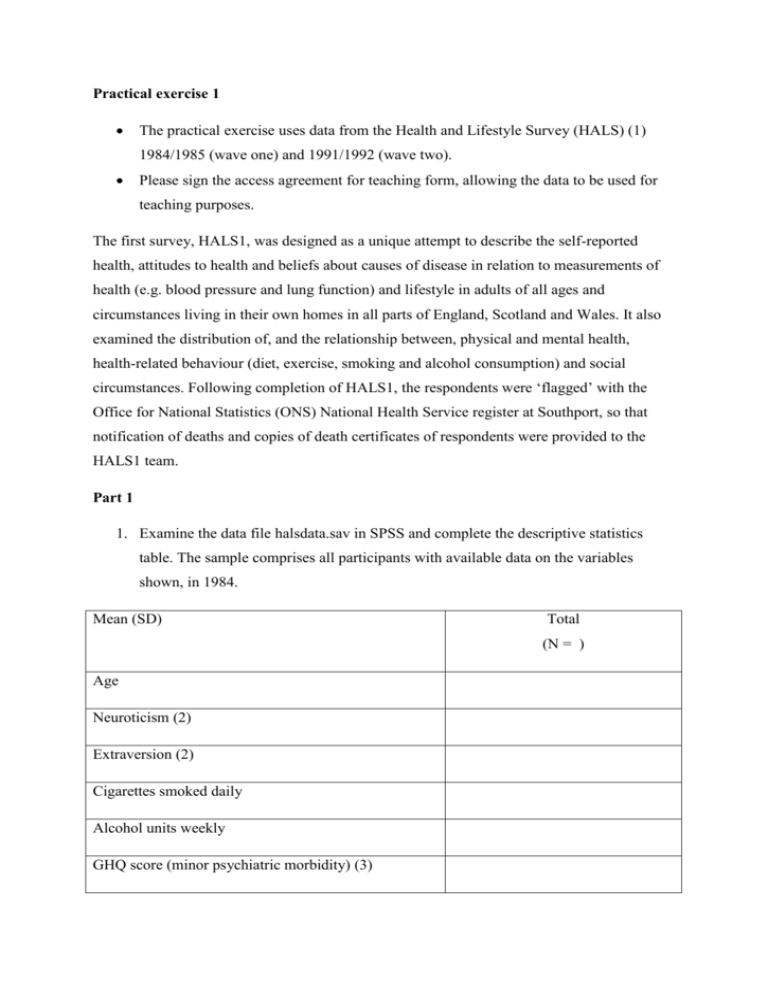
Practical exercise 1 The practical exercise uses data from the Health and Lifestyle Survey (HALS) (1) 1984/1985 (wave one) and 1991/1992 (wave two). Please sign the access agreement for teaching form, allowing the data to be used for teaching purposes. The first survey, HALS1, was designed as a unique attempt to describe the self-reported health, attitudes to health and beliefs about causes of disease in relation to measurements of health (e.g. blood pressure and lung function) and lifestyle in adults of all ages and circumstances living in their own homes in all parts of England, Scotland and Wales. It also examined the distribution of, and the relationship between, physical and mental health, health-related behaviour (diet, exercise, smoking and alcohol consumption) and social circumstances. Following completion of HALS1, the respondents were ‘flagged’ with the Office for National Statistics (ONS) National Health Service register at Southport, so that notification of deaths and copies of death certificates of respondents were provided to the HALS1 team. Part 1 1. Examine the data file halsdata.sav in SPSS and complete the descriptive statistics table. The sample comprises all participants with available data on the variables shown, in 1984. Mean (SD) Total (N = ) Age Neuroticism (2) Extraversion (2) Cigarettes smoked daily Alcohol units weekly GHQ score (minor psychiatric morbidity) (3) 2. Our hypothesis is that cigarette smoking mediates the association between neuroticism and minor psychiatric morbidity. Complete the path diagram on the template provided to specify this model. 3. Complete the correlation matrix below for the study variables, in the lower diagonal. 1 1. Age 2 3 4 5 - 2. Neuroticism - 3. Extraversion 4. Cigarettes - smoked daily 5. Alcohol units - weekly 6. GHQ score 4. Test for mediation in SPSS using the traditional Baron & Kenny (1986) approach. a. Show that X and Y are correlated. b. Show that X and M are correlated. c. Show that X and M predict Y. 5. What is your conclusion? 6. Save the data as hals_mplus.dat. Untick ‘Write variable names to spreadsheet’ before saving, so that Mplus can read the data. Mplus 7. Using Mplus, modify the input file model_basic.inp to specify a structural equation model in which cigarette smoking is a mediating variable between neuroticism and minor psychiatric morbidity score. 8. Calculate the indirect effect by hand, using unstandardized beta weights. 9. What is the proportion of the total effect that is mediated? 10. Obtain the indirect effect and its statistical significance using the Sobel statistic from MODEL INDIRECT. Is it significant? 11. What proportion of variance is accounted for in cigarette smoking and minor psychiatric morbidity, by the variables in the model? 12. Do you think that age and sex are possible confounding factors? 13. Control for age and sex in the model. Does this change your interpretation? 14. Obtain 95% confidence intervals and bootstrapped standard errors by adding ANALYSIS: BOOTSTRAP=1000; OUTPUT: STANDARDIZED CINT. Use these estimates to summarize the main findings in a short paragraph. Include the effect size, direct and indirect effects, 95% confidence intervals and proportion of variance accounted for. Part 2 A more complex model is proposed, involving two personality traits (neuroticism and extraversion) and two health behaviours (cigarette smoking and alcohol drinking). 15. Perform the path diagram in Mplus and complete the diagram on the template provided using standardized regression coefficients. 16. How many indirect effects are implied by the model? 17. Obtain the indirect effects, 95% confidence intervals and p values for each of the indirect effects in the model. 18. What is the total effect from neuroticism to GHQ? 19. What is the total effect from extraversion to GHQ? 20. Summarize the main findings. References 1. 2. 3. Cox BD. Health and Lifestyle Survey, 1984-1985 (HALS1) User Manual. Essex/Manchester: Economic and Social Data Service; 1988. Eysenck SBG, Eysenck HJ. An improved short questionnaire for the measurement of extraversion and neuroticism. Life Sciences. 1964;3(10):1103-9. Huppert FA, Walters DE, Day NE, Elliott BJ. The factor structure of the general health questionnaire (GHQ-30) - a reliability study on 6317 community residents. British Journal of Psychiatry. 1989;155:178-85.
